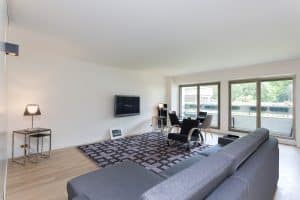The Return of the Servants’ Quarters: Modern Staff Housing Trends
The role of household staff has evolved over the years, and so has their living arrangements. In the 18th and 19th centuries, servants’ quarters were a common feature in wealthy households, with live-in staff expected to tend to the needs of their employers 24/7. However, as domestic employees became less prevalent in modern times, the use of servants’ quarters declined. But now, in a surprising turn of events, there has been a resurgence in interest towards staff housing. This article will delve into the modern trends of servants’ quarters and how they are adapting to the needs of today’s workforce.
The Evolution of Servants’ Quarters
In the past, it was commonplace for affluent households to have a separate area of the house dedicated to the living quarters of their household staff. These living spaces were often small and basic, with little or no privacy provided for the employees. However, with the rise of the industrial revolution and the increase in urbanization, the need for domestic help decreased. As a result, the use of servants’ quarters declined over the years.
But as the job market changed and more people turned to employment in the service industry, there has been a renewed interest in staff housing. The modern servants’ quarters aim to provide comfortable and private living spaces for domestic employees.
The New Face of Servants’ Quarters
Today, servants’ quarters are designed to cater to the needs and expectations of modern domestic employees. While traditional quarters provided only a bedroom and basic facilities, modern staff housing offers much more. Many of these living spaces come equipped with amenities such as a fully equipped kitchen, bathroom, and even a small living area. Some staff quarters even have an outdoor space for the employees to relax in.
Another significant trend in modern servants’ quarters is the emphasis on privacy. In the past, domestic staff had no choice but to live in close quarters with their employers, which often led to a lack of privacy. However, modern staff housing is built with the employee’s privacy in mind. Many of these living spaces have separate entrances, providing a sense of independence for the workers.
The Benefits of Staff Housing
Improved Working Conditions
The rise of modern servants’ quarters has brought about a significant change in the working conditions of domestic employees. By providing comfortable living spaces for staff, employers can ensure that their workers are well-rested and have a space to relax outside of working hours. This, in turn, can improve the overall job satisfaction of the employees.
Attracting and Retaining Employees
The job market for domestic workers is highly competitive, and employers are now realizing the importance of providing attractive perks to attract and retain quality employees. Modern servants’ quarters are a great incentive for workers, as it provides them with a comfortable space to call home while working for their employers.
The Social Impact
As society becomes more aware and empathetic towards the working conditions of domestic staff, the demand for better living arrangements has increased. Employers are now seeing the value in investing in their employees’ well-being, leading to a positive social impact. By providing modern staff housing, employers are setting an example of fair working conditions and promoting better treatment for domestic workers as an essential part of society.
The Future of Servants’ Quarters
The resurgence of servants’ quarters is a clear indication of the changing attitudes towards domestic employees. As society continues to evolve, we can expect to see even more modern and innovative staff housing solutions in the future. From eco-friendly living spaces to smart homes, the possibilities are endless.
Conclusion
The return of servants’ quarters is a positive development in the world of domestic employment. By providing modern and comfortable living spaces for their employees, employers are showing their commitment to improving the working conditions of domestic staff. As we continue to move towards a more inclusive and fair society, the trend of modern staff housing is likely to continue and evolve, benefiting both employers and employees alike.




